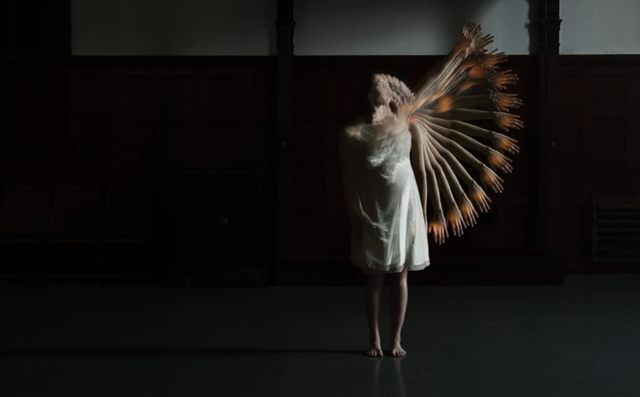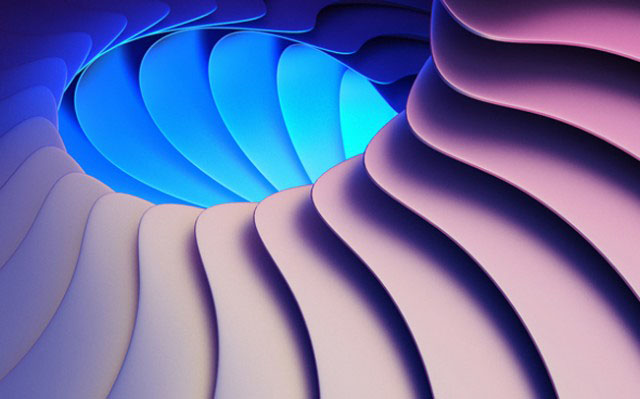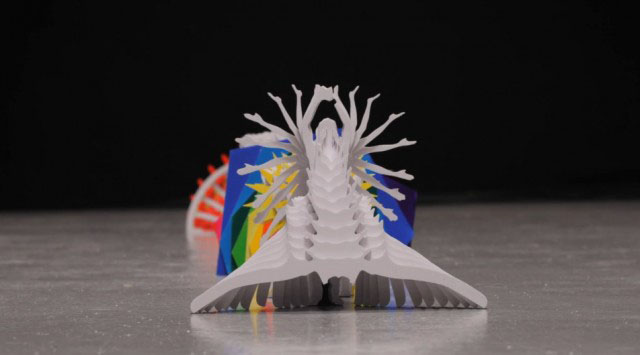Principles and practices, project management
interface and application programming
mechanical design, machine design
MOTION TUNNEL
From all the machines that we have in our lab here in Fab Lab SP, the one that I use the most is the laser cutter. I had done some works with it before and it was easy to understand its interface. I used to draw the top view of my object directly in Adobe Illustrator CS5.5 and from there I exported a DXF file to be opened in the laser cutter. For me, the task for this assignment was to create my file initially in a 3D software and from there export the file to the laser cutter. The greatest advantage in doing this new way is that now I could preview the tridimensional object and make adjustments that I wasn´t able to do on the 2D version.
So for this week´s assignment I decided to work inside the context of motion as well as I intend to do for my final project. The idea was to create a press-fit construction kit that altogether would give the idea of something moving.
I made 48 layers of squares that would press-fit on a base keeping the set aligned and straight. The motion would happen inside this set of squares like a moving object had created a shape out of its interior.
I managed to achieve the expected result but I found on the way a lot of minor details that could had improved the result. In the end of this assignment I´ll list some references that came my way during the creation process and that inspired me somehow.
The steps I took to create this project were the following:
- From the initial sketches I draw the object in Rhino 3D
- Inside Rhino I created the 48 layers of squares, aligned and punched them with a shape of a meshed surface
- Inside Rhino I created the base and adapted the pieces so they could fit to each other
- Inside Rhino it was necessary to create signs (a circle mark at the bottom of the square), so that I would know how to order the layers during assemblage
- Selected the curves of the objects and exported the file to a .DXF file with is recognized by the laser cutter software
- Determine speed and power of the laser cutter (120W) according to the material I wanted to use, in this case it was a high density cardboard. For the power I used 35 and for speed 45
- Assemble the press-fit construction kit and document the process
Using Grasshopper:
I intend to use parametric design for the next assignments. I know that doing so, I could achieve even better results and would speed up all the construction process. The application I´m more interested at the moment is the Grasshopper plugin for Rhino 3D, this generative application could automate some steps of the development of my project like adapting changes in the size of the set and fit as a whole.
For the Motion Tunnel I tried using Grasshopper to create the mesh between the curves that would originate the moving space inside my object. The steps were the following:
- Open Grasshopper
- Drag curve parameters to the canvas (those curve parameters should be corresponding to my curves previously created in Rhino)
- Select the Loft component from the Surface Tab and drag it to the canvas
- Assign the curves of my object to each curve parameter (Set one curve)
- Connect the curve parameters to the Loft connector (Section Curves) and bake it
The mounting:
What could I have done better (and I´ll do in the near future):
After assembling the kit I noticed that only two lines to hold the layers were not sufficient, because they would not hold the layers straight at 90°. To resolve this problem I would add two more lines of structure symmetrically positioned at the top of the set.
Other thing that took me a lot of time during assembling was finding the right face of each square. I thought that only creating circles alongside the bottom of each square would help me during arranging the layers to their correct position, but I totally forgot not to cut these circles out of the surface. This caused a lot of problems because I didn´t know which of the faces were the correct ones. The simplest solution would be to just engrave those circles on each surface, so simple and so helpful!
Ideas for the future, to improve this project:
- The set could have a totally new appearance if I would try replacing the high density cardboard for an acrylic plate for example. Acrylic works very well with light and if I could somehow mix those two elements together I may get a very interesting result in which the moving interior could be seen from outside. For this I should adapt the fit in order to give space for a LED tape alongside the two structure base lines.
Some references that inspired this assignment:

Choros Film is a short film by Michael Langan and Terah Maher that captures the movement of dance and body as a visual experience. Similar to this idea, the Motion Tunnel tries to register the movement in its interior so we could notice each step of a moving square.

Revolved Forms is a series of 3D shapes, by Črtomir Just, that were cloned and illuminated in a unique way. The light and motion here inspired me to think on a new proposal for the Motion Tunnel, adding light to the artwork through each layer.

Katachi is a stop-motion video that uses more than 2000 pieces of plastic to compose it. The motion here is captured layer by layer and translated into something physical.

Where are you? is an artwork that deals with the understanding of the physical world. It deals with the layers of acrylic in an association with the layers of energy fields creating the illusion of solidity. The layer division and the possibility to see the piece in different angles called my attention.
----
Softwares: Rhino 3D / Grasshopper / LaserGrav 8.0
Hardwares: Laser Cutter (120W) DS3
Files: Rhino 3D - file 01 / file 02 / Grasshopper